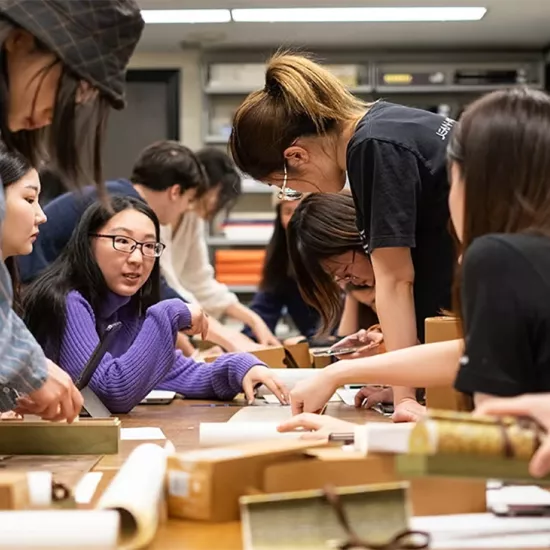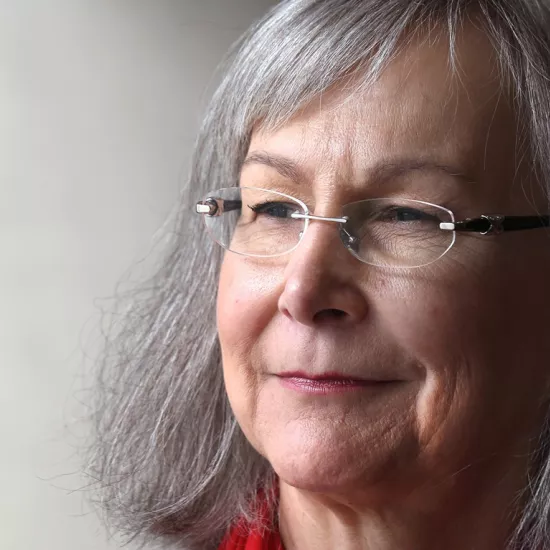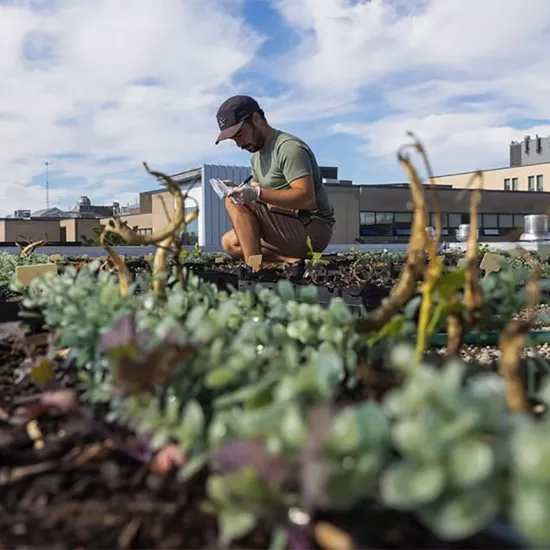Barriers in the landscape: Examining the school transportation challenges for children with disabilities

Every weekday morning, Professor Ron Buliung’s five-year-old daughter Asha powers her wheelchair onto a bus – by herself – and goes to school. Seeing her do this always makes Buliung proud, but it can also remind him of the stress and long hours that went into making this seemingly simple travel arrangement.
With help from a new grant from the Social Sciences and Humanities Research Council, funding from the Norman Saunders Complex Care Initiative at Toronto’s Hospital for Sick Children, and funds from UTM’s Research and Scholarly Activity Fund (RSAF) Buliung and his Ph.D. student Timothy Ross will document the complex process families confront to get their children with disabilities to school. Both caregivers and the children themselves will be active participants in the research project, helping to illustrate the systemic and personal challenges involved in finding an appropriate school, determining the mode of transport, securing funding and managing the logistics. The aim, he says, is to identify what’s working for families and what isn’t, with the long-term goal of easing some of the everyday and different challenges households with children with disabilities experience.
“We won’t just be looking at the travel that you see. We’ll examine how all of that gets executed from a policy perspective and at the level of school administration,” says Buliung, a professor in UTM’s Department of Geography. “It’s a story that starts with a child’s diagnosis and continues through the moment of getting to school. We want to show the work the families had to do to get there. And then we’ll look at the threshold-to-threshold experiences: what happens at home, at school, and in between.”
For Buliung’s family, one of the most frustrating hurdles was finding a way for Asha to travel from the front door to the bus door. “We had to work with the City of Toronto for nearly two years to get permission to re-landscape our front yard – just to get the chair to the curb,” he says. “It was mind-bogglingly frustrating.”
Part of the project will involve giving cameras to the participants so they can take photos of anything they feel is important, enjoyable or challenging about their school travel experience – it could be the technology used for mobility, a special toy that goes along for the ride, familiar scenes along the route or a bus driver’s smile. “We’ll use these pictures as cues in the research interviews about the highlights and challenges of the trip,” he says.
Buliung is known for his transportation geography research, including the factors determining how children get to school and the health effects of those decisions. But it wasn’t until Asha was diagnosed with a genetic neuromuscular disease called Spinal Muscular Atrophy (SMA) at about 11 months old that he began examining mobility for children with disabilities. “It was like switching lenses on a camera. Literally from the day of Asha’s diagnosis, I started to see so many barriers in the landscape,” he says.
Since then, Buliung has used his families and Asha’s first hand experience with disability to pose research questions. “It makes sense to use our family’s knowledge,” he says. “Asha has been instrumental in showing me a way to do something meaningful.” She will play a key role in the pilot phase of this investigation into school travel by helping to develop camera technology suited to children with different abilities, and taking photographs of her own journey.
Buliung has realistic yet ambitious goals for the project. “If a parent is exhausting energy on the stress of completing transportation and other education forms every year because there aren’t automated records, that’s energy and time they’re not spending with their children, or on themselves to reduce stress,” he says. “We often look for grandiose visions and large infrastructure projects, and those are important, but I’m working on a different scale – the everyday lives of families like ours. Within the context of all these larger things, what can we do to make people’s lives a little bit easier?”



